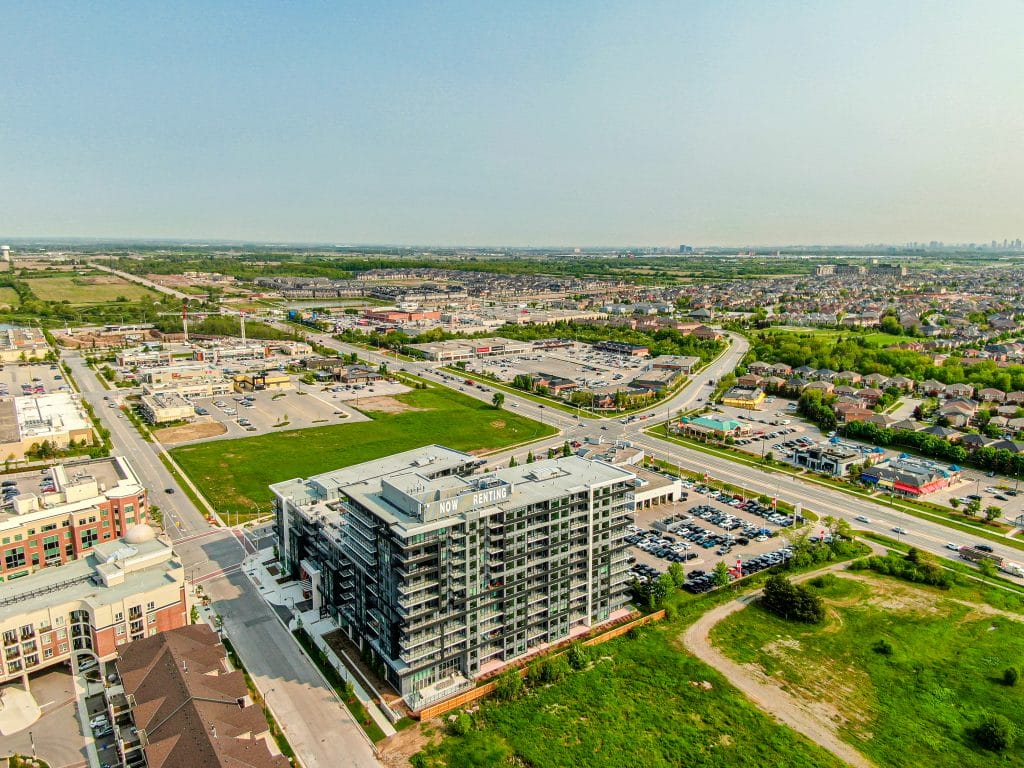
You’ve probably seen them. Those incredible aerial drone photos and videos. Spend a few minutes on Instagram searching hashtags like #dronestagram and you’ll find thousands of jaw-dropping aerial photos. For years, the photos would have required extremely expensive technology to capture. It may even be necessary to use a helicopter or plane at times. With advances in modern technology, a drone, or as the professionals prefer to call them, an unmanned aerial vehicle or UAV, can now be purchased at a local hobby shop or Staples store for less than a couple of thousand dollars.
The technology has advanced to the point where these UAVs can now fly 500 meters in some cases and more than 5 kilometers from the launch point. They can also capture incredible shots in 4K resolution and produce mind-blowing aerial photos.
As a result, if you’re like many real estate agents, architects, or marketers, you’ll probably consider aerial photography or videography at some point. The question is, how do you proceed? What should you think about before hiring a drone pilot? Or maybe you can get your own drone? We’ve compiled a list of things you should think about before proceeding. Take precautions with your drone photography project.
Restrictions
Before you launch a drone, you should be aware of the following restrictions. Many federal governments have put restrictions on where and how drones can be flown. Regulators are becoming much more stringent about where, when, and who can fly an unmanned aerial vehicle (UAV). There are many restrictions, such as how high you can fly, what time of day you can fly, and where you can and cannot fly a UAV. These restrictions are frequently difficult for local governments to enforce because drones are so fast and nimble that they can be spotted in one location and quickly brought down and packed up in another. However, if you are caught, the fines can be severe, and it is often a federal crime.
Insurance
A great photo shoot is essential. Insurance for your drone is required by law. In reality, drone insurance is more concerned with damage caused by the drone itself. It is required by law to be able to produce an insurance certificate when flying. This will shield you from liability resulting from injury or death. Consider that a drone pilot is flying a highly advanced piece of electronic equipment with fast-moving rotators. The damage can be severe if a prop comes loose or the drone loses the signal from the controller. The good news is that no major incidents have yet resulted in death, but it is only a matter of time. If you hire a professional, make certain that they have insurance coverage to protect your interests.
Obtaining Federal Approval
Transport Canada is currently in charge of ensuring the safe operation of UAVs in Toronto. They distinguish between what is recreational flying and what is commercial flying. Flying a drone for commercial aerial photography, for example, is not a recreational activity. The flight operator must obtain an SFOC from Transport Canada, which serves as authorization to fly. The SFOC will notify Transport Canada of the location, time, altitude, duration, purpose, experience, and other details. It should be noted that many aerial photographers fly without an SFOC. This is due to the fact that the process of acquiring an SFOC remains complex and involved, as well as the fact that more and more UAVs are becoming available at more affordable prices to hobbyists.
After flying a number of flights on a regular SFOC and demonstrating your ability to fly safely and without incident, you can obtain a Standing (blanket) SFOC. Working with a Standing SFOC, which does not need to be renewed and can be revoked/suspended at any time, can speed up the process of completing your aerial photography photos and videos. However, many procedures must be followed, including providing notice to airmen (NOTAM) of your flight at least 48 hours in advance to ensure that aircraft in the area are aware that you intend to fly. Communication with the nearest airport control tower is also required for safe operation.
Risk
Make sure to assess the level of risk associated with the flight. If the flight is taking place in a densely populated area, the risks are multiplied. These dangers are not limited to the pilot but can also affect those within the drone’s range. One of the most serious issues with commercial drone photography is that many photographers are simply inexperienced pilots, posing an inherent risk to those around them, the property, and your reputation.
Creative
Not all aerial drone pilots are the same. Capturing great photos and videos in the air is a skill in and of itself. There are numerous factors to consider. They include the shot’s composition, camera settings, and the flight itself. Moving the drone too quickly or panning without a smooth transition can lead to poor quality. Another skill is to extract the files from the photos and videos and create an eye-catching end product. The post-production work required to create a great final product is equally important.
So, before you go online and start comparing prices from drone photography service providers, think about the risk, quality, and overall legality of what you’re about to do. There is no doubt that the aerial photography industry will continue to grow, particularly for real estate projects, so take your time in finding a company that can do it right. When your reputation is on the line, it’s worth it.
OTBx Air is pleased to advocate for safe and legal aerial drone photography and videography. We collaborate with a talented team of professionals who fly with valid SFOC and insurance. Get more information on our aerial photography packages and services. Book a quick consultation with us today to learn more about how we can provide you with professional, high-quality photos from the sky!

